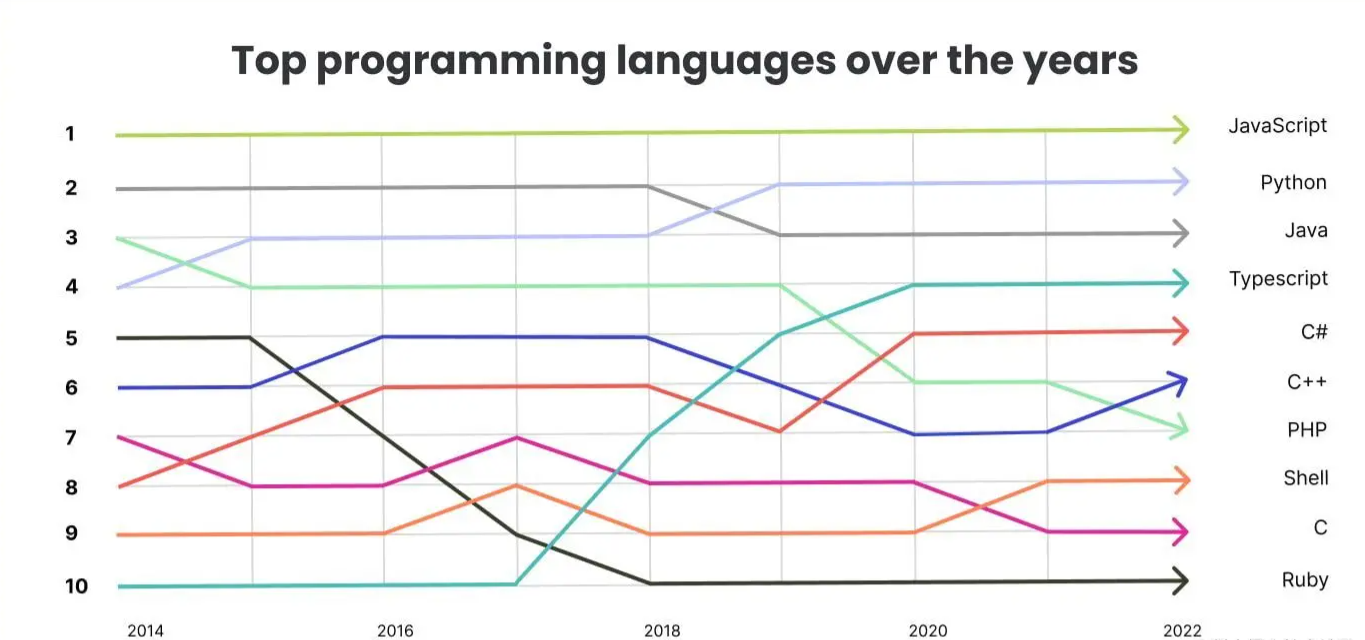 Java
Java javaTutorial
javaTutorial A survey of the capabilities of Spring framework in front-end and back-end development
A survey of the capabilities of Spring framework in front-end and back-end development
Study the role of Spring framework in front-end and back-end development
Introduction:
With the rapid development of the Internet, the development of websites and applications has become More and more complex. In order to simplify the development process and improve efficiency, many developers choose to use the Spring framework for development. Spring framework is a lightweight application development framework that can be used for front-end and back-end development. This article will introduce the role of the Spring framework in front-end and back-end development and provide specific code examples.
1. The role of the Spring framework in front-end development
- Inversion of control (IoC) and dependency injection (DI)
The Spring framework uses inversion of control and dependency injection The design pattern leaves the creation and dependency management of objects to the framework. In this way, front-end developers do not need to care about object creation and management, and can focus more on implementing business logic. The following is a simple example of inversion of control and dependency injection:
public class UserController {
private UserService userService;
public UserController(UserService userService) {
this.userService = userService;
}
// 省略其他方法
}
public class UserService {
// 省略方法实现
}
public class Main {
public static void main(String[] args) {
UserService userService = new UserService();
UserController userController = new UserController(userService);
// 省略其他操作
}
}- Aspect-oriented programming (AOP)
The Spring framework supports aspect-oriented programming, which can integrate some common functions, Such as logging, transaction management, etc. are abstracted to enhance the maintainability and scalability of the application. The following is an example of using aspect-oriented programming:
@Aspect
@Component
public class LoggingAspect {
@Before("execution(* com.example.service.*.*(..))")
public void beforeAdvice(JoinPoint joinPoint) {
System.out.println("Method " + joinPoint.getSignature().getName() + " is called.");
}
}
@Service
public class UserService {
public void createUser(String username, String password) {
// 创建用户逻辑实现
}
}
- MVC development model
The Spring framework provides a mature MVC (Model-View-Controller) development model that is available for building user interfaces. In front-end development, the Spring MVC framework is especially useful as it maps requests to different controller methods and passes data to the view layer. The following is a simple Spring MVC example:
@Controller
public class UserController {
@Autowired
private UserService userService;
@RequestMapping(value = "/user/{id}", method = RequestMethod.GET)
public String getUser(@PathVariable int id, Model model) {
User user = userService.getUserById(id);
model.addAttribute("user", user);
return "user";
}
}
2. The role of the Spring framework in back-end development
- Data access
The Spring framework provides some Modules for database access, such as JdbcTemplate, HibernateTemplate, etc., make data access simpler and more efficient. The following is an example of using JdbcTemplate for data access:
@Repository
public class UserDaoImpl implements UserDao {
@Autowired
private JdbcTemplate jdbcTemplate;
public User getUserById(int id) {
String sql = "SELECT * FROM users WHERE id = ?";
return jdbcTemplate.queryForObject(sql, new Object[]{id}, new UserRowMapper());
}
// 省略其他方法
}- Security Control
The Spring framework provides a series of security control functions and tools, such as authentication, authorization, etc. , which can help developers secure their applications. Here is an example of using Spring Security for authentication and authorization:
@Configuration
@EnableWebSecurity
public class SecurityConfig extends WebSecurityConfigurerAdapter {
@Override
protected void configure(HttpSecurity http) throws Exception {
http
.authorizeRequests()
.antMatchers("/admin/**").hasRole("ADMIN")
.antMatchers("/user/**").hasRole("USER")
.anyRequest().authenticated()
.and()
.formLogin()
.and()
.logout()
.and()
.csrf().disable();
}
@Autowired
public void configureGlobal(AuthenticationManagerBuilder auth) throws Exception {
auth
.inMemoryAuthentication()
.withUser("admin").password("password").roles("ADMIN")
.and()
.withUser("user").password("password").roles("USER");
}
}
Conclusion:
Spring framework plays an integral role in front-end and back-end development. Through control inversion and dependency injection, the Spring framework simplifies object creation and dependency management; through aspect-oriented programming, the Spring framework provides an elegant way to enhance applications; through the MVC development model, the Spring framework encapsulates the user interface Development process; through data access and security control, the Spring framework improves the efficiency and reliability of back-end development. I believe that through the introduction and examples of this article, developers can better utilize the Spring framework for front-end and back-end development.
The above is the detailed content of A survey of the capabilities of Spring framework in front-end and back-end development. For more information, please follow other related articles on the PHP Chinese website!
 2023年将突出的一些前端开发趋势,学起来!Mar 14, 2023 am 09:37 AM
2023年将突出的一些前端开发趋势,学起来!Mar 14, 2023 am 09:37 AM前端开发趋势总是在不断发展,有些趋势会长期流行。本篇文章给大家总结了2023 年将突出的一些前端开发趋势,分享给大家~
 Flet:一个可跨平台的基于Flutter的Python框架Apr 20, 2023 pm 05:46 PM
Flet:一个可跨平台的基于Flutter的Python框架Apr 20, 2023 pm 05:46 PM昨天刚发了一篇Python桌面开发库大全的微头条,就被同事安利了Flet这个库。这是一个非常新的库,今年6月份才发布的第一个版本,虽然很新,但是它背靠巨人-Flutter,可以让我们使用Python开发全平台软件,虽然目前还不支持全平台,但是根据作者的计划,Flutter支持的,它以后都会支持的,昨天简单学习了一下,真的非常棒,把它推荐给大家。后面我们可以用它做一系列东西。什么是FletFlet是一个框架,允许用你喜欢的语言构建交互式多用户Web,桌面和移动应用程序,而无需拥有前端开发的经验。主
 如何使用PHP和Angular进行前端开发May 11, 2023 pm 04:04 PM
如何使用PHP和Angular进行前端开发May 11, 2023 pm 04:04 PM随着互联网的飞速发展,前端开发技术也在不断改进和迭代。PHP和Angular是两种广泛应用于前端开发的技术。PHP是一种服务器端脚本语言,可以处理表单、生成动态页面和管理访问权限等任务。而Angular是一种JavaScript的框架,可以用于开发单页面应用和构建组件化的Web应用程序。本篇文章将介绍如何使用PHP和Angular进行前端开发,以及如何将它们
 node.red是什么Nov 08, 2022 pm 03:53 PM
node.red是什么Nov 08, 2022 pm 03:53 PMnode.red指Node-RED,是一款基于流的低代码编程工具,用于以新颖有趣的方式将硬件设备,API和在线服务连接在一起;它提供了一个基于浏览器的编辑器,使得我们可以轻松地使用编辑面板中的各种节点将流连接在一起,只需单击即可将其部署到其运行时。
 学会利用sessionstorage,提高前端开发效率Jan 13, 2024 am 11:56 AM
学会利用sessionstorage,提高前端开发效率Jan 13, 2024 am 11:56 AM掌握sessionStorage的作用,提升前端开发效率,需要具体代码示例随着互联网的快速发展,前端开发领域也日新月异。在进行前端开发时,我们经常需要处理大量的数据,并将其存储在浏览器中以便后续使用。而sessionStorage就是一种非常重要的前端开发工具,可以为我们提供临时的本地存储解决方案,提高开发效率。本文将介绍sessionStorage的作用,
 前端开发中的JavaScript异步请求与数据处理经验总结Nov 03, 2023 pm 01:16 PM
前端开发中的JavaScript异步请求与数据处理经验总结Nov 03, 2023 pm 01:16 PM前端开发中的JavaScript异步请求与数据处理经验总结在前端开发中,JavaScript是一门非常重要的语言,它不仅可以实现页面的交互和动态效果,还可以通过异步请求获取和处理数据。在这篇文章中,我将总结一些在处理异步请求和数据时的经验和技巧。一、使用XMLHttpRequest对象进行异步请求XMLHttpRequest对象是JavaScript用于发送
 前端开发中的JavaScript路由与页面跳转经验总结Nov 02, 2023 am 10:15 AM
前端开发中的JavaScript路由与页面跳转经验总结Nov 02, 2023 am 10:15 AM前端开发中,JavaScript路由和页面跳转是必不可少的一部分。一个好的路由方案和页面跳转实现可以带来优秀的用户体验和页面性能。在本篇文章中,我们将从JavaScript路由的基础知识以及页面跳转的常见实现方式进行探讨,分享一些在实践中获得的经验和总结。一、JavaScript路由基础知识为了更好的理解什么是JavaScript路由,我们需要先了解下前端路
 Webman:提供强大的视觉效果和动画效果的前端开发框架Aug 13, 2023 pm 10:07 PM
Webman:提供强大的视觉效果和动画效果的前端开发框架Aug 13, 2023 pm 10:07 PMWebman:提供强大的视觉效果和动画效果的前端开发框架前端开发在不断发展和进步的技术领域中扮演着重要的角色。随着互联网的普及和用户对用户体验的不断追求,前端开发需要更加强大且能够提供令人印象深刻的视觉效果和动画效果。Webman作为一种前端开发框架,致力于提供强大的视觉效果和动画效果,为开发者创造出独特而令人印象深刻的用户体验。Webman集成了丰富的前端


Hot AI Tools

Undresser.AI Undress
AI-powered app for creating realistic nude photos

AI Clothes Remover
Online AI tool for removing clothes from photos.

Undress AI Tool
Undress images for free

Clothoff.io
AI clothes remover

AI Hentai Generator
Generate AI Hentai for free.

Hot Article

Hot Tools

Dreamweaver CS6
Visual web development tools

SecLists
SecLists is the ultimate security tester's companion. It is a collection of various types of lists that are frequently used during security assessments, all in one place. SecLists helps make security testing more efficient and productive by conveniently providing all the lists a security tester might need. List types include usernames, passwords, URLs, fuzzing payloads, sensitive data patterns, web shells, and more. The tester can simply pull this repository onto a new test machine and he will have access to every type of list he needs.

MantisBT
Mantis is an easy-to-deploy web-based defect tracking tool designed to aid in product defect tracking. It requires PHP, MySQL and a web server. Check out our demo and hosting services.

mPDF
mPDF is a PHP library that can generate PDF files from UTF-8 encoded HTML. The original author, Ian Back, wrote mPDF to output PDF files "on the fly" from his website and handle different languages. It is slower than original scripts like HTML2FPDF and produces larger files when using Unicode fonts, but supports CSS styles etc. and has a lot of enhancements. Supports almost all languages, including RTL (Arabic and Hebrew) and CJK (Chinese, Japanese and Korean). Supports nested block-level elements (such as P, DIV),

ZendStudio 13.5.1 Mac
Powerful PHP integrated development environment





